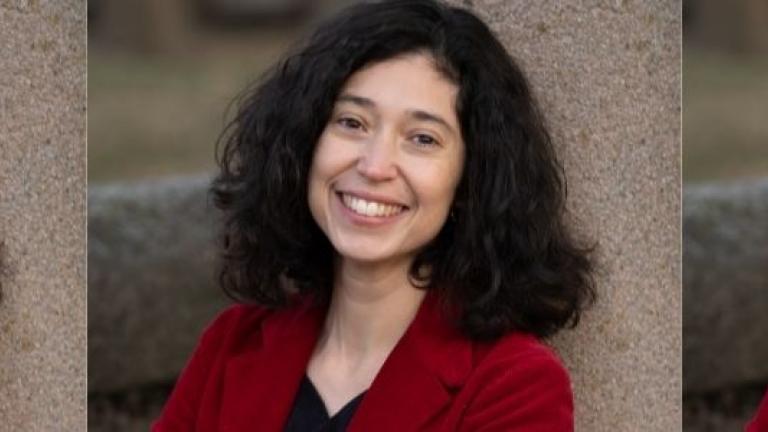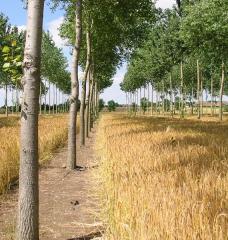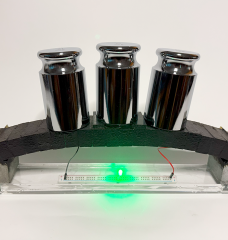
Jenny Larios Berlin, an Entrepreneur in Residence at the Martin Trust Center, had the opportunity to attend the Consumer Electronics Show in January 2022. She wrote this report based on her experience.
The annual Consumer Electronics Show (CES) in Las Vegas was a blast. Even though it was under attended, for a newbie like myself, it was the perfect size! Below is my non-traditional take on the show.
You’ve probably already heard about the cool, weird, and fresh gadgets and tech that came out of CES. This post isn’t about any of that. Instead it’s about CES supporting the international startup ecosystem, challenging tech to consider its social impact, and launching sessions on NFT/social tech. These are things I wasn’t expecting to see at CES, but I’m glad that I did.
In the Venetian hotel, the conference area had a space called the Eureka Park. This area was dedicated to startups and had a stage dedicated for startup-focused sessions. For example, CES hosted sessions exploring country policies encouraging tech innovation, global trends in venture capital investment, distinguishing features of hardware startups, and initiatives taken to support more diversity in the space. I spent A LOT of time walking the exhibit halls.
In this area, multiple countries had on display their tech startups, research initiatives, and governmental support for new ventures. There were countries like Japan, Turkey, South Korea, Italy, Great Britain, and France to name a few. South Korea in particular had multiple universities in attendance to display their technical research and how it is directly linked to technology startups. Japan had on display SkyDrive’s Flying Car. Individuals were allowed to climb into the vehicle to take photos. Next to this exhibit was the U.S. government’s Startup Showcase where all the government support departments were on display, such as the patent office and small business administration.
Aside from the country showcases, there were a selection of American startups segmented by industry. While there I was pleasantly surprised to find companies leveraging technology for women’s health and community building. For example, I met Ariel from Florida who is the founder and CEO of Remane; they provide data-driven hair care plans and product recommendations that align to users’ lifestyle, goals, and values. They build community across individuals with specific hair types to support confidence and beauty in any hairstyle and type. Ariel was invited to exhibit. It would be interesting to find out what other diversity and inclusion initiatives CES has underway to make more companies like Remane common place.
It is my belief that diversity of perspectives will enrich the potential uses of various technologies. This takes me to the next topic: considering tech’s social impact.
There were multiple sessions and topics talking about social impact. There was a session titled “Innovative Accessibility: Improving User Experiences for All.” The panelists represented a diversity of disabilities from restrained movement because of Multiple Sclerosis to blindness. The discussion revolved around the value of integrating inclusive design from the very beginning of a product. The panel went on to say that the essential features for someone with a disability become the convenience factor for able-bodied individuals. For example, the technology that converts text to speech has been cross-applied to audiobooks. The point here being that technology that unlocks access for disabled communities can, in fact, be tech that opens other value-creating use cases.
In another session, “Tackling Food Waste With Technology,” the focus was sustainability. The panel discussed tech’s impact on reducing food waste; all agreed that the area in which technology can have the greatest impact is in the supply chain. Immediate ways to improve the supply chain are by consuming fresh, in-season, and locally farmed food. Beyond that, tools and techniques that support inventory tracking throughout the supply chain would enable the data gathering that isn’t happening now to fully understand the actual consumption demand to better inform farmers with a closed loop data flow. Technological solutions that address labor shortages was another area of potential innovation. For example, robotic equipment that can be used to pick fruits and vegetables is already an area of innovation.
Smart cities’ role in climate change was another area where CES attempted to explore technology’s possible positive impact. In the discussion it was evident that a sense of urgency, holistic data collection/analysis, and regulation needs to work together to unlock technologies’ greatest potential to positively impact climate change. Specific areas of concern are water, energy, and emissions management.
Now to the last topic: CES introducing NFT and social tech.
At the Storytellers Stage in the ARIA hotel, first-of-their-kind topics were presented. For example, “NFT, WTF?!?!,” “The Future Sounds Amazing: Betting on Social Audio,” and “How Technology Finally Disrupted the Art Market.” In fact, this area also hosted CES’ first NFT digital display. This, to me, was the most exciting place to be because it explored the human and community building aspect of technology.
The Social Audio session was about live online audio programs where listeners can be active participants in the program. For example, there could be a session hosted by anyone for a specific topic that participants can freely join, ask questions, make comments, and help drive the conversation. This type of program enables a neighborhood feeling with highly distributed participants. The world becomes a much smaller place.
The intersection of blockchain and cryptocurrency has sparked an exciting new frontier for art. I was blown away to learn that the sale of NFTs creates a royalty revenue for artists. Historically an artist would get paid for a painting on the first sale and that’s it. Any future sales of the art piece would go to the existing owner. With NFTs, every time the art piece is resold the artist gets a royalty. Unfortunately the process for accessing the market is still clunky and cumbersome so the opportunity to democratize access is still to be created. However, the community groups that have popped up to guide individuals in the process of accessing the market is a testament to the excitement in this space and the desire to make it more accessible.
Thinking about tech for sustainability, creatives, and access for all was truly inspirational for me. I hope this gave you a glimpse into that side of CES, and Perhaps inspires your thinking on your personal entrepreneurship or technology development.CES: The Newbie’s (Off the Beaten Path) Experience






